Mystery rashes, bumps and welts on a child can be a tremendous source of stress for parents and discomfort for the child, but often they are not anything to be concerned about, most of which fade on their own. Sometimes, however, they can be an indication of a greater problem. Many illnesses including a rash, and whilst most are caused by minor irritations, the source of which can be hard to determine, some can be caused by bacterial or viral elements and will need to be addressed by seeking medical advice.
Itchy Rash in Children
Rashes can arise for so many reasons including infections and irritations. It’s important to know when to seek the advice of a doctor or other healthcare professionals. Rashes that are caused by infections can get progressively worse and cause great discomfort for your child, some are just caused by minor triggers and disappear as quickly as they appear. Knowing the difference can save you a lot of trouble.
1. Diaper Rash
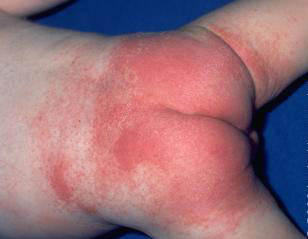 Infants have very sensitive skin and quite often wearing nappies or diapers can cause irritations and rashes. These rashes can be caused by fecal matter, urine or simply chafing and rubbing. Whilst this is the most common in infants, it can happen to anyone who has to wear a nappy or diaper. It is characterized by a red rash that tends not to affect any creases or folds. The rash is usually limited to the diaper area and can be prevented in many cases by regular diaper changes and thorough gentle cleaning with unscented baby wipes. A barrier cream such as a zinc cream can often help and it is also important to let your baby have time without a diaper on a regular basis.
Infants have very sensitive skin and quite often wearing nappies or diapers can cause irritations and rashes. These rashes can be caused by fecal matter, urine or simply chafing and rubbing. Whilst this is the most common in infants, it can happen to anyone who has to wear a nappy or diaper. It is characterized by a red rash that tends not to affect any creases or folds. The rash is usually limited to the diaper area and can be prevented in many cases by regular diaper changes and thorough gentle cleaning with unscented baby wipes. A barrier cream such as a zinc cream can often help and it is also important to let your baby have time without a diaper on a regular basis.
2. Hives
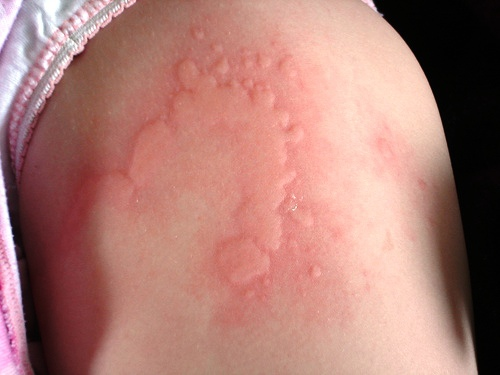 Hives or welts are characterized by raised pink or red bumps that are most commonly found on the trunk, arms and legs. These bumps can be quite itchy and can have a variety of different causes including medications, fungal, bacterial or viral infections, stress, environment irritants and allergens, medical conditions and food allergies or sensitivities. Medical professionals classify hives into 2 different categories: acute (episodes that last less than 6 weeks) and chronic (episodes that last longer than 6 weeks). Lesions generally mass in groups and usually clear within 24 hours, but can last much longer. In some cases swelling can occur around the eyes, mouth, hands, feet, or genitals. Infants are not the only people susceptible to hives and they can be avoided by staying away from known irritants. They can be calmed by cool showers and by applying cold compresses.
Hives or welts are characterized by raised pink or red bumps that are most commonly found on the trunk, arms and legs. These bumps can be quite itchy and can have a variety of different causes including medications, fungal, bacterial or viral infections, stress, environment irritants and allergens, medical conditions and food allergies or sensitivities. Medical professionals classify hives into 2 different categories: acute (episodes that last less than 6 weeks) and chronic (episodes that last longer than 6 weeks). Lesions generally mass in groups and usually clear within 24 hours, but can last much longer. In some cases swelling can occur around the eyes, mouth, hands, feet, or genitals. Infants are not the only people susceptible to hives and they can be avoided by staying away from known irritants. They can be calmed by cool showers and by applying cold compresses.
3. Scabies
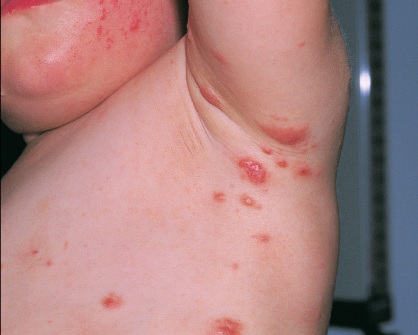 Scabies is not an infection so much as an infestation. Tiny mites burrow into the skin and multiply, causing the rash that typically accompanies the infestation. It is not linked to poor hygiene, but is more likely to occur in people who live in crowded conditions. Those who are susceptible include new moms, children, young sexually active adults and people who live or work in nursing homes. Lesions of scabies typically occur on the arms, legs, trunk, palms and the soles of the feet of young children. Doctors typically treat this with prescription creams, which are the most common treatments.Mites cannot survive off the body for more than 48 hours, so washing bedding and clothes is important in ridding your house of a scabies infestation.
Scabies is not an infection so much as an infestation. Tiny mites burrow into the skin and multiply, causing the rash that typically accompanies the infestation. It is not linked to poor hygiene, but is more likely to occur in people who live in crowded conditions. Those who are susceptible include new moms, children, young sexually active adults and people who live or work in nursing homes. Lesions of scabies typically occur on the arms, legs, trunk, palms and the soles of the feet of young children. Doctors typically treat this with prescription creams, which are the most common treatments.Mites cannot survive off the body for more than 48 hours, so washing bedding and clothes is important in ridding your house of a scabies infestation.
4. Poison Ivy, Oak, and Sumac Allergy
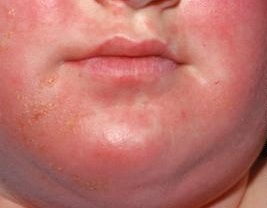 This reaction is caused by each respective plant and can happen to anyone of any age. It is characterized by a red rash wherever contact with the plant has been made. Occasionally the oil from the plant can leave a black dot on the lesions and in some cases can cause swelling around the face. This intensely itchy rash can be relieved with oatmeal baths and over the counter remedies. Remember to wash skin as soon as possible and any clothes that have come into contact with the allergen. Seek a doctor’s advice if these self-treatment measures fail to see a visible improvement.
This reaction is caused by each respective plant and can happen to anyone of any age. It is characterized by a red rash wherever contact with the plant has been made. Occasionally the oil from the plant can leave a black dot on the lesions and in some cases can cause swelling around the face. This intensely itchy rash can be relieved with oatmeal baths and over the counter remedies. Remember to wash skin as soon as possible and any clothes that have come into contact with the allergen. Seek a doctor’s advice if these self-treatment measures fail to see a visible improvement.
5. Scarlet Fever
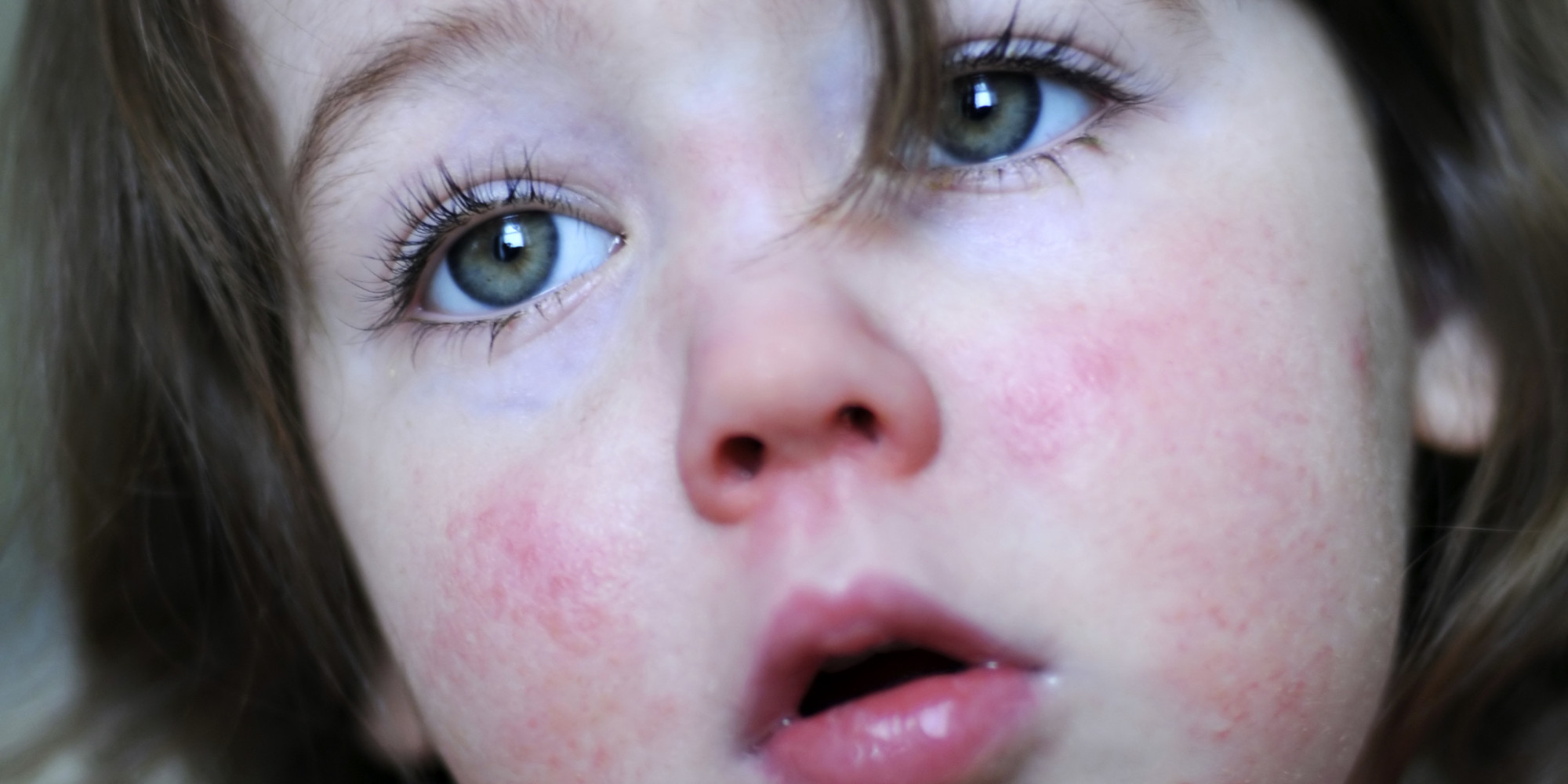 Scarlet fever is caused by the same bacteria as strep throat and is characterized by a fever, red rash around the hands feet and face, vomiting, difficulty swallowing, loss of appetite, red and yellow blotches in the throat and swollen lymph nodes. This bacterial infection needs medical attention and a course of antibiotics, typically penicillin. This condition is highly contagious and your child should not be sent to daycare until the course of antibiotics is finished. Things you can do to ease your child’s symptoms include using child-friendly pain reliever as your bub may be experiencing headaches and a sore throat.
Scarlet fever is caused by the same bacteria as strep throat and is characterized by a fever, red rash around the hands feet and face, vomiting, difficulty swallowing, loss of appetite, red and yellow blotches in the throat and swollen lymph nodes. This bacterial infection needs medical attention and a course of antibiotics, typically penicillin. This condition is highly contagious and your child should not be sent to daycare until the course of antibiotics is finished. Things you can do to ease your child’s symptoms include using child-friendly pain reliever as your bub may be experiencing headaches and a sore throat.
6. Fifth Disease
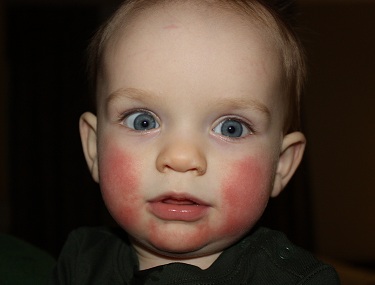 Slapped Cheek disease or fifth disease is caused by the parvovirus B19 virus. This virus presents with a rash around the cheeks, fever, nausea and diarrhea. This virus is contagious before the rash appears and ceases to be contagious once the rash has presented. Your child will probably be lethargic and sore.Seeking medical attention is advised and you can relieve your child’s pain with over-the-counter children’s pain reliever.
Slapped Cheek disease or fifth disease is caused by the parvovirus B19 virus. This virus presents with a rash around the cheeks, fever, nausea and diarrhea. This virus is contagious before the rash appears and ceases to be contagious once the rash has presented. Your child will probably be lethargic and sore.Seeking medical attention is advised and you can relieve your child’s pain with over-the-counter children’s pain reliever.
7. Viral Exanthem
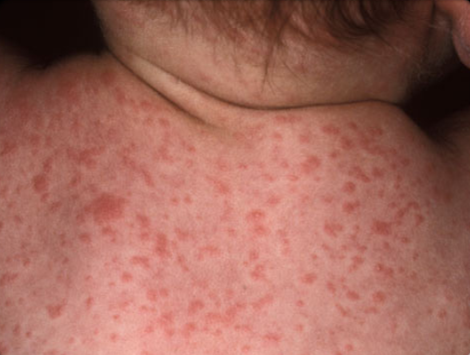 This is a rash caused by a virus. It is often difficult to tell which virus, but the rash is typically characterized by a head to toe rash, fatigue, sore joints and irritability. There is little you can do for your child apart from keeping them comfortable. Do not use aspirin, but other over the counter children’s medicines are generally fine. Seek medical advice if your child is vomiting, experiencing diarrhea, has severe abdominal pain, has a fever, severe headache or seizures. Viral rashes are most often found in younger children without fully formed immunity to such viruses.
This is a rash caused by a virus. It is often difficult to tell which virus, but the rash is typically characterized by a head to toe rash, fatigue, sore joints and irritability. There is little you can do for your child apart from keeping them comfortable. Do not use aspirin, but other over the counter children’s medicines are generally fine. Seek medical advice if your child is vomiting, experiencing diarrhea, has severe abdominal pain, has a fever, severe headache or seizures. Viral rashes are most often found in younger children without fully formed immunity to such viruses.
Learn more about viral skin rashes in babies, watch the video below:
